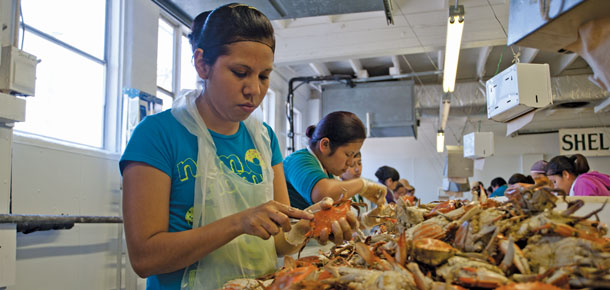Citing a combination of record job growth and depressed workforce participation, the U.S. Department of Homeland Security and the Department of Labor Jan. 27 announced an increase in H-2B visas for the first half of the current fiscal year.
The move means 20,000 more visas for nonimmigrant temporary workers in nonagricultural settings, such as seafood processing, will be available through the end of March.
As the International Legal and Business Services Group explained in a statement, when the work permits become available on Friday, 28 January, it will serve as the first time the program expands its allotment for the first half of the fiscal year.
“To qualify for an H-2B visa, employers must first provide certification from the DOL that there are no available U.S. workers who are able, willing, qualified, and available to fill the role,” the Schaumburg, Illinois-based law firm said. “They must also prove that the wages they are paid won’t adversely affect the working conditions or wages of other employees in similar roles.”
The new visas will be divided into two groups. The first batch of visas will go to 13,500 people who either have received a visa or received an H-2B designation during the past three fiscal years. The remaining 6,500 will be held for workers from Haiti, El Salvador, Guatemala, and Honduras. Individuals from those Latin American and Caribbean countries are exempted from the returning worker rule.
In a statement, U.S. Homeland Security Secretary Alejandro Mayorkas said the “needs of our economy” precipitated the move.
“We are providing employers with the resources and support needed to sustain their businesses while expanding lawful pathways to the United States,” he said. “At the same time, DHS and DOL are protecting against the exploitation of H-2B workers.”
The Biden administration’s move comes two weeks after U.S. Rep. Andy Harris (R-Maryland) called on the government to increase the number of visas available to workers, citing fears that crab houses in his Eastern Shore district would not have the workers it needed for the seasonal jobs.
Demand is typically high for the visas from a variety of industries. For years, lawmakers have called on the government to expand the number of visas available annually, and prior administrations have made other one-time adjustments to accommodate some of the demand.
Before Thursday’s announcement, the number of available H-2B visas was set at 66,000 for the 2022 federal fiscal year. Those permits divided evenly between the first and second halves of the year, which started on Oct. 1, 2021.
This story originally appeared on SeafoodSource.com and is republished here with permission.







